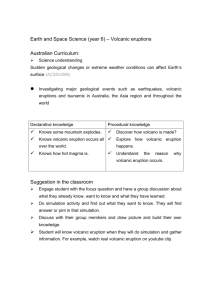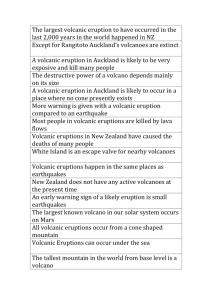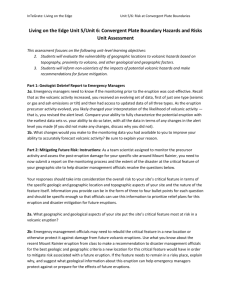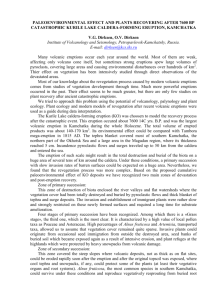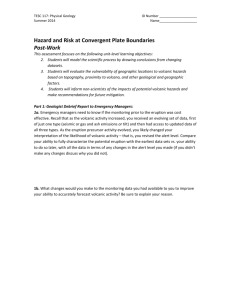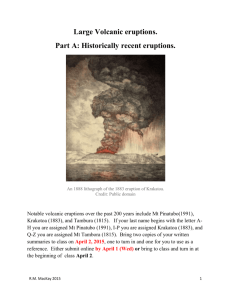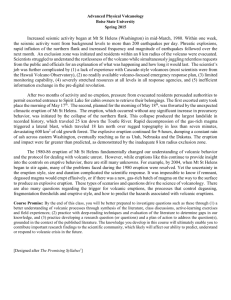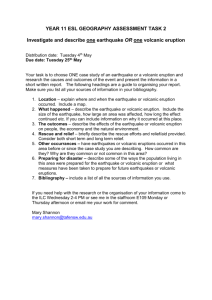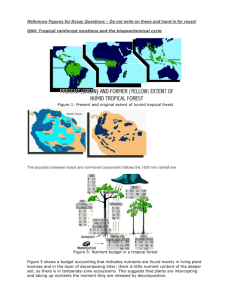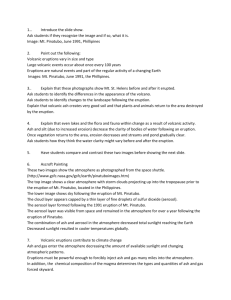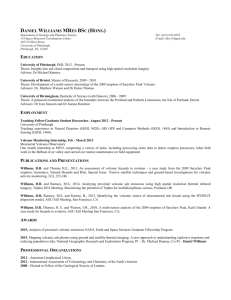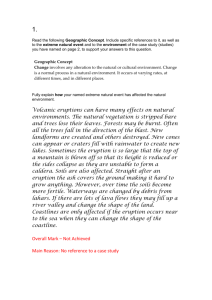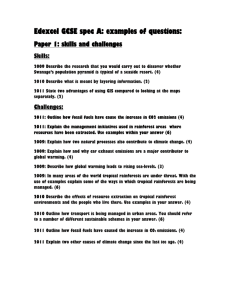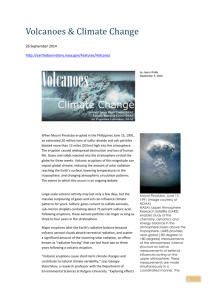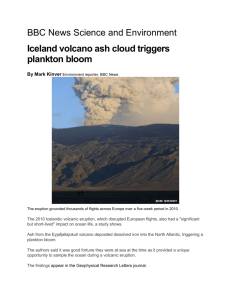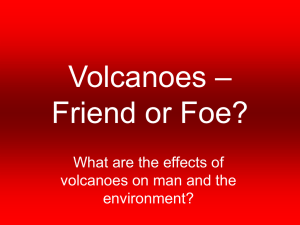The influence of large volcanic eruptions on stratospheric circulation
advertisement
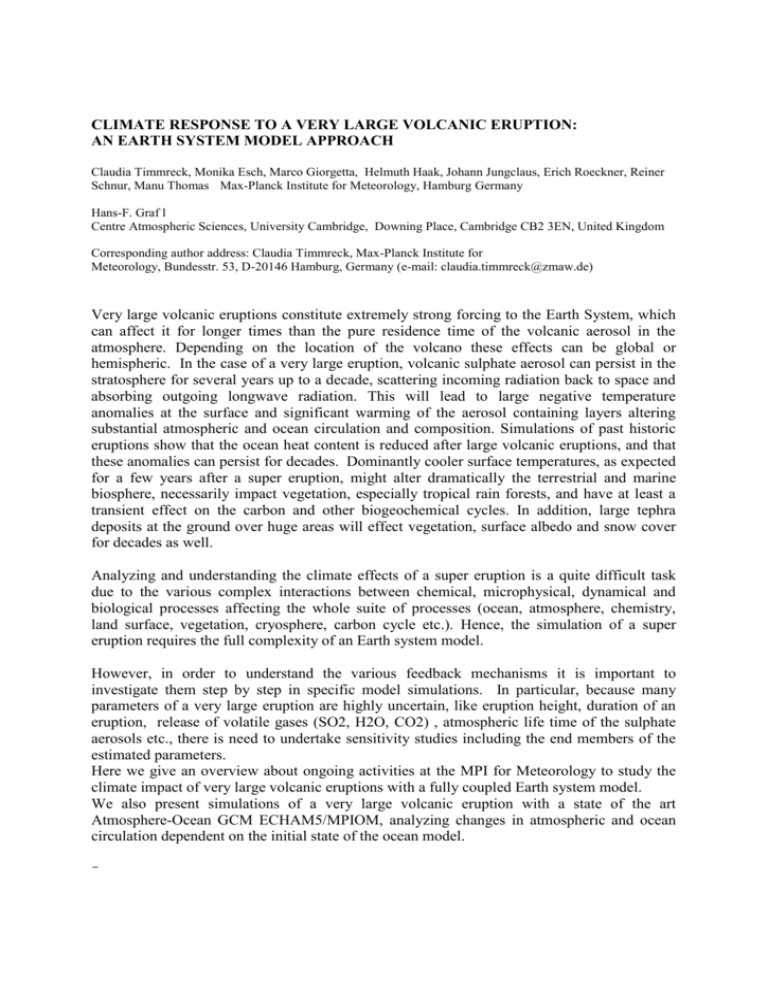
CLIMATE RESPONSE TO A VERY LARGE VOLCANIC ERUPTION: AN EARTH SYSTEM MODEL APPROACH Claudia Timmreck, Monika Esch, Marco Giorgetta, Helmuth Haak, Johann Jungclaus, Erich Roeckner, Reiner Schnur, Manu Thomas Max-Planck Institute for Meteorology, Hamburg Germany Hans-F. Graf l Centre Atmospheric Sciences, University Cambridge, Downing Place, Cambridge CB2 3EN, United Kingdom Corresponding author address: Claudia Timmreck, Max-Planck Institute for Meteorology, Bundesstr. 53, D-20146 Hamburg, Germany (e-mail: claudia.timmreck@zmaw.de) Very large volcanic eruptions constitute extremely strong forcing to the Earth System, which can affect it for longer times than the pure residence time of the volcanic aerosol in the atmosphere. Depending on the location of the volcano these effects can be global or hemispheric. In the case of a very large eruption, volcanic sulphate aerosol can persist in the stratosphere for several years up to a decade, scattering incoming radiation back to space and absorbing outgoing longwave radiation. This will lead to large negative temperature anomalies at the surface and significant warming of the aerosol containing layers altering substantial atmospheric and ocean circulation and composition. Simulations of past historic eruptions show that the ocean heat content is reduced after large volcanic eruptions, and that these anomalies can persist for decades. Dominantly cooler surface temperatures, as expected for a few years after a super eruption, might alter dramatically the terrestrial and marine biosphere, necessarily impact vegetation, especially tropical rain forests, and have at least a transient effect on the carbon and other biogeochemical cycles. In addition, large tephra deposits at the ground over huge areas will effect vegetation, surface albedo and snow cover for decades as well. Analyzing and understanding the climate effects of a super eruption is a quite difficult task due to the various complex interactions between chemical, microphysical, dynamical and biological processes affecting the whole suite of processes (ocean, atmosphere, chemistry, land surface, vegetation, cryosphere, carbon cycle etc.). Hence, the simulation of a super eruption requires the full complexity of an Earth system model. However, in order to understand the various feedback mechanisms it is important to investigate them step by step in specific model simulations. In particular, because many parameters of a very large eruption are highly uncertain, like eruption height, duration of an eruption, release of volatile gases (SO2, H2O, CO2) , atmospheric life time of the sulphate aerosols etc., there is need to undertake sensitivity studies including the end members of the estimated parameters. Here we give an overview about ongoing activities at the MPI for Meteorology to study the climate impact of very large volcanic eruptions with a fully coupled Earth system model. We also present simulations of a very large volcanic eruption with a state of the art Atmosphere-Ocean GCM ECHAM5/MPIOM, analyzing changes in atmospheric and ocean circulation dependent on the initial state of the ocean model. -

